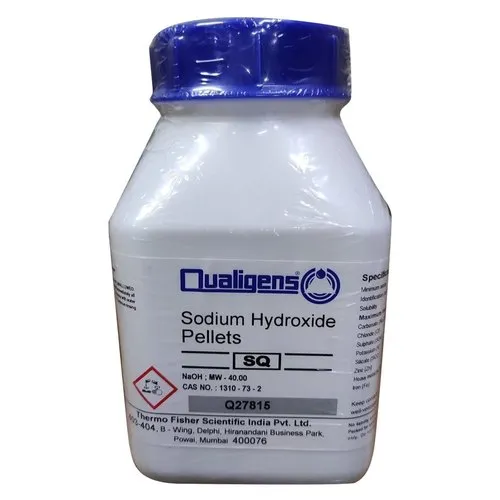Blog
Sodium Hydroxide: Your Essential Guide to Safety and Usage
Sodium hydroxide, a powerful industrial chemical, is widely used in various industries due to its versatile properties. In this comprehensive guide, we will explore the importance of sodium hydroxide, its applications, safety measures, and handling procedures. By understanding sodium hydroxide, you can ensure safe and efficient use of this vital substance.
What is Sodium Hydroxide?
Overview of Sodium Hydroxide
Sodium hydroxide (NaOH), also known as lye or caustic soda, is a highly caustic and versatile chemical. It is used in numerous industrial processes, including manufacturing, cleaning, and chemical synthesis.

Uses of Sodium Hydroxide
- Manufacturing: Essential in producing paper, textiles, and detergents.
- Cleaning Agent: Used in drain cleaners and oven cleaners due to its ability to dissolve grease and organic matter.
- Chemical Synthesis: Integral in producing various chemicals, including plastics, soaps, and biodiesel.
- Water Treatment: Utilized to neutralize acids and remove heavy metals in water treatment processes.
Importance of Sodium Hydroxide Safety
What is Safety Data Sheet (SDS)?
A Safety Data Sheet (SDS) provides detailed information about the properties, hazards, handling, and storage of chemicals. Understanding the sodium hydroxide SDS is crucial for ensuring safe usage and minimizing risks.
Key Components of a Sodium Hydroxide SDS
- Identification: Chemical name, synonyms, and recommended uses.
- Hazard Identification: Details on health, environmental, and physical hazards.
- Composition/Information on Ingredients: Lists chemical ingredients and their concentrations.
- First-Aid Measures: Instructions for responding to exposure or accidents.
- Fire-Fighting Measures: Guidance on extinguishing fires involving sodium hydroxide.
- Accidental Release Measures: Steps to take in case of spills or leaks.
- Handling and Storage: Best practices for safe handling and storage.
- Exposure Controls/Personal Protection: Information on necessary protective equipment and exposure limits.
- Physical and Chemical Properties: Details about the chemical’s appearance, odor, boiling point, etc.
- Stability and Reactivity: Information on chemical stability and potential reactions.
- Toxicological Information: Data on toxic effects and symptoms of exposure.
Safety Measures for Handling Sodium Hydroxide
Personal Protective Equipment (PPE)
When handling sodium hydroxide, wearing appropriate PPE is essential to prevent injuries:
- Gloves: Chemical-resistant gloves to protect your hands.
- Goggles: Safety goggles to shield your eyes from splashes.
- Apron: A chemical-resistant apron to protect your clothing and skin.
- Respirator: If necessary, use a respirator to avoid inhaling fumes.
Safe Handling Practices
- Use in Well-Ventilated Areas: Always handle sodium hydroxide in areas with good ventilation to avoid inhaling fumes.
- Avoid Inhalation and Contact: Be cautious to prevent skin and eye contact or inhaling vapors.
- Proper Storage: Store sodium hydroxide in a cool, dry place away from incompatible substances such as organic materials, metals, and acids.
- Labeling: Ensure all containers are properly labeled to avoid accidental misuse.
Emergency Procedures
First-Aid Measures
In case of exposure to sodium hydroxide, follow these first-aid steps:
- Skin Contact: Immediately flush the affected area with plenty of water for at least 15 minutes. Remove contaminated clothing.
- Eye Contact: Rinse eyes with water for at least 15 minutes while holding eyelids open. Seek medical attention immediately.
- Inhalation: Move the person to fresh air. If they have difficulty breathing, seek medical help immediately.
- Ingestion: Do not induce vomiting. Rinse mouth with water and seek medical attention right away.
Spill and Leak Procedures
- Containment: Isolate the area and prevent the spill from spreading.
- Neutralization: Use appropriate neutralizing agents if safe to do so.
- Clean-Up: Wear protective equipment and clean up the spill using non-reactive materials.
Purchasing Sodium Hydroxide
Why Buy Sodium Hydroxide Online?
Buying sodium hydroxide online offers several advantages:
- Convenience: Purchase from the comfort of your home or office.
- Wide Selection: Access to a broader range of products and suppliers.
- Competitive Pricing: Often find better prices compared to local suppliers.
Tips for Safe Online Purchase
- Verify Supplier: Ensure the supplier is reputable and offers high-quality products.
- Check Reviews: Look for customer feedback and reviews to gauge the reliability of the supplier.
- Confirm SDS Availability: Make sure the supplier provides a comprehensive SDS.
Conclusion
Understanding the properties and safety measures associated with it is crucial for its safe handling and use. By following the guidelines provided in the sodium hydroxide SDS, you can minimize risks and ensure a safe working environment.
If you need high-quality sodium hydroxide, purchase from our store today. Our products come with detailed SDS documentation to help you handle them safely and efficiently.
Follow us on Facebook
